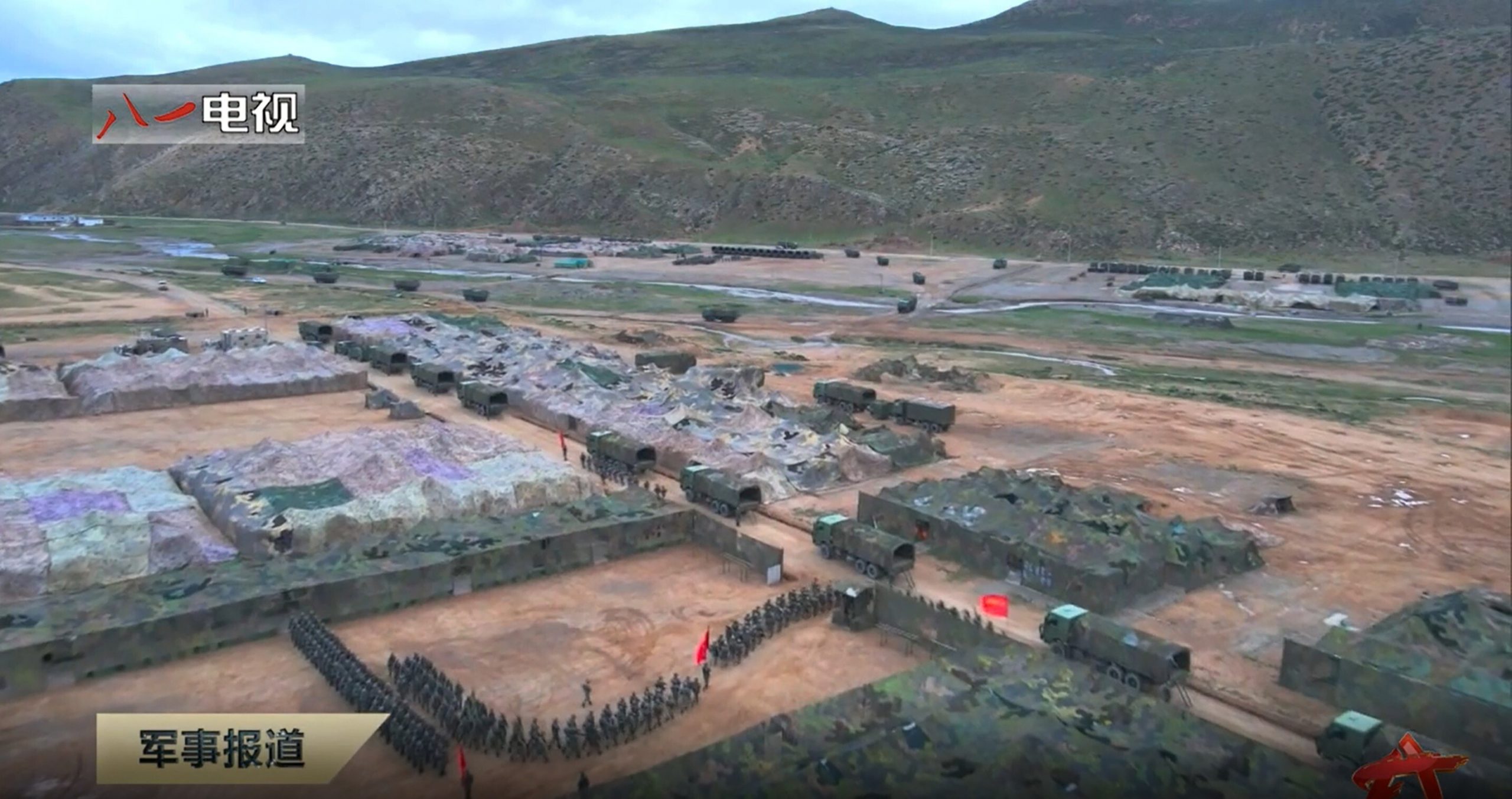The Chinese People’s Liberation Army (PLA) recently conducted large-scale drills in the snowy plateau of Tibet bordering India. This Snowfield Duty-2021 exercise took place 4,500 meters above sea level and involved more than 10 brigades and regiments.
‘Hanging In Air’: Why US-India Deal On ‘Super Lethal’ MQ-9B SeaGuardian Drone Is Yet To Take Off
It was a joint, multidimensional combat exercise in mountainous and plateau regions, with the goal of target elimination. A video of the exercise was released by the state-owned China Central Television (CCTV).
During the drills, the troops operated some of the PLA’s latest equipment and weapons. Such a display of power by China in the Tibet region is a warning sign to India, analysts believe.
China Flexes Military Muscle
CCTV reported that the PLA’s Tibet Military Command had held drills of live fire in different terrains, over different time periods as well as employing all types of combat elements in Tibet.
Combat units joining the drill included an elite regiment from the military district, alpine troops, forces with tanks and military vehicles, artillery personnel, missile forces, drones, intelligence personnel, army aviation teams, and airborne troops, the CCTV video clip showed.
In the entire exercise lasting for over two days and a night, the Tibet Military District under the Western Theatre Command mobilized several brigades and divided them into two groups: the PLA and a rival “blue army”, according to the video aired by CCTV.
PLA Combined Brigade
The drill began with a combined arms brigade mobilizing and maneuvering to the mission area using darkness as a cover.
The first wave of attacks was launched at midnight when artillery forces barraged munitions on hostile reconnaissance and early warning facilities using howitzers and multiple rocket launcher systems. They then destroyed hostile communication centers and helicopter pads.

Early on the second day of the drills, a reconnaissance unit climbed a 6,100-meter mountain and took vantage points. Following this, observation positions were set up. They provided guidance for precision strikes on important hostile targets behind the defense lines.
Anti-aircraft batteries deployed by a defense brigade launched missiles to intercept hostile aircraft. It cleared the sky of enemy threats, post which the main forces – tanks, infantry combat vehicles, and assault vehicles – moved ahead to capture hostile positions.
The intelligence reconnaissance brigade began electromagnetic disruption of hostile communications facilities, to the advantage of the troops.
Aerial Assaults
Attack helicopters of an army aviation brigade joined for providing additional multidimensional fire support, after the artillery positions were compromised, leading to the relocation of self-propelled howitzers and multiple rocket launcher systems.
Further support to the march was provided by sappers that cleared obstacles with explosives. Transport helicopters carried scouts for infiltration missions deep into the enemy areas. Logistics support units provided a steady supply of ammunition and food to the troops.
The PLA group broke through enemy defense lines before noon and neutralized all enemies, seizing control of all hostile positions. After the troops switched to defense, the drill came to a close.
The exercise comprehensively explored the combat performance of all the units and all the weapons and equipment, as they further enhance combat capabilities of joint operations, precision strikes, high-efficiency damage, and comprehensive logistics support in high-altitude regions, CCTV said.
A Warning To India?
India and China share a 3,488-km-long disputed border, called the Line of Actual Control (LAC). Of this, 1,126 km is located in India’s northeastern state of Arunachal Pradesh.
However, China claims Arunachal Pradesh to be South Tibet, a claim that India has vehemently rejected.
Since Xi Jinping took office as the President, China has been aggressively developing Tibetan border villages near Arunachal Pradesh. This has been a source of consistent tensions between the two nations.
The two Asian giants have been locked in a border stand-off since the June 2020 Galwan valley clash that caused casualties to both sides. Since then, both sides have continued deploying troops along the LAC.
India’s ongoing Malabar naval war games in tandem with the Quad nations are also a message to China about the Quad nations’ stand against it stamping its naval authority in the region.
In this context, China using the designation “blue army” has been interpreted as a hit at the Indian troops. At the same time, the drills showcased China’s military power in the region and the war-readiness of its army — a signal to the Indian army to tread carefully.
- Follow EurAsian Times on Google News
- Co-authored by Shreya Mundhra